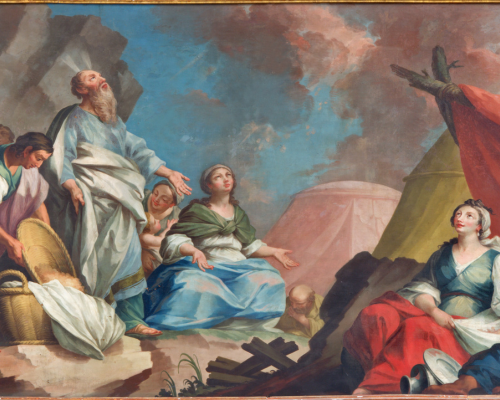For those of us who love diving deep into the Torah, Parashat Hashavua is like a weekly treasure hunt! Every week, we get to explore a new portion of the Torah, uncovering its timeless lessons and wisdom. Let me guide you through what makes Parashat Hashavua such a vital tradition in Jewish life.

What is Parashat Hashavua? פרשת השבוע
Simply put, Parashat Hashavua means “the weekly Torah portion.” Each week, a different section of the Torah is read in synagogues all over the world. These portions are carefully divided to ensure that the entire Torah is read over the course of a year. So, every week brings something new, a fresh part of the Torah to study and reflect on. Isn’t that amazing?
The History and Tradition Behind Parashat Hashavua
The tradition of reading the weekly Torah portion dates back thousands of years. The practice started as a way to ensure that all Jews, no matter where they lived, would be reading and reflecting on the same part of the Torah at the same time. It’s a beautiful way to stay connected with the global Jewish community, even if you’re miles apart. And honestly, knowing that Jews from all corners of the world are reading the same portion as you—it’s powerful.
How is Parashat Hashavua Studied?
You can study it alone, with a partner (chavruta-חברותא), or in a group. Many people read through the text, but others go deeper with commentaries from scholars like Rashi and Maimonides. Personally, I love sitting down with a cup of tea before Shabat or during Shabat and diving into a commentary that sheds light on a verse I hadn’t considered before.
Famous Parashot Hashavoa



1. Bereishit (בְּרֵאשִׁית) – Genesis 1:1 – 6:8
- Key Lesson: Creation, human responsibility, and free will. The portion highlights the choices and consequences faced by humanity through the stories of Adam, Eve, and the Tree of Knowledge.
2. Noach (נֹחַ) – Genesis 6:9 – 11:32
- Key Lesson: The story of Noah’s Ark and the flood. This parasha teaches righteousness in a corrupt world and God’s covenant with humanity, emphasizing faith, responsibility, and renewal.
3. Lech Lecha (לֶךְ-לְךָ) – Genesis 12:1 – 17:27
- Key Lesson: Abraham’s journey as he answers God’s call to leave his homeland, demonstrating faith and trust. It introduces the divine covenant and God’s promise to make Abraham the father of a great nation.
4. Vayeira (וַיֵּרָא) – Genesis 18:1 – 22:24
- Key Lesson: The Akedat Yitzchak (Binding of Isaac) is a central story, illustrating deep trust in God. It also teaches the importance of hospitality, as seen in Abraham’s interactions with strangers.
5. Toldot (תּוֹלְדוֹת) – Genesis 25:19 – 28:9
- Key Lesson: The story of Jacob and Esau, their birth, and the transfer of the birthright. It touches on themes of family, choices, and divine involvement in human affairs.
6. Shemot (שְׁמוֹת) – Exodus 1:1 – 6:1
- Key Lesson: The oppression of the Israelites in Egypt and the birth of Moses. This parasha introduces the themes of leadership, redemption, and the beginnings of the Israelite exodus from slavery.
7. Yitro (יִתְרוֹ) – Exodus 18:1 – 20:23
- Key Lesson: The giving of the Ten Commandments at Mount Sinai. It marks the moment where God establishes a moral and legal framework for the Israelites, covering their relationship with God and with each other.
8. Mishpatim (מִּשְׁפָּטִים) – Exodus 21:1 – 24:18
- Key Lesson: A collection of civil and ethical laws, teaching the value of justice, fairness, and compassion in the society. It emphasizes the importance of responsibility and community.
9. Kedoshim (קְדֹשִׁים) – Leviticus 19:1 – 20:27
- Key Lesson: “You shall be holy” (קְדֹשִׁים תִּהְיוּ). This parasha contains various moral and ethical laws, emphasizing kindness, justice, and holiness in everyday life, including the famous verse, “Love your neighbor as yourself.”
10. Beha’alotcha (בְּהַעֲלֹתְךָ) – Numbers 8:1 – 12:16
- Key Lesson: The parasha recounts the Israelites’ journey in the wilderness and their struggle with faith, teaching lessons of humility, trust, and the challenges of leading a large community.
11. Korach (קֹרַח) – Numbers 16:1 – 18:32
- Key Lesson: The rebellion of Korach against Moses and Aaron teaches the dangers of jealousy and the consequences of challenging legitimate leadership. It underscores the importance of humility and recognizing divine authority.
12. Devarim (דְּבָרִים) – Deuteronomy 1:1 – 3:22
- Key Lesson: The beginning of Moses’ final speeches before the Israelites enter the Promised Land. It focuses on reflecting on past lessons, reinforcing loyalty to God, and the importance of following His commandments.
As you can see, every parasha comes with timeless lessons that are still relevant today.
Resources for Studying Parashat Hashavua
Thankfully, there are tons of resources available to help you study Parashat Hashavua. First you can check out parashat hashavua this week here. Also you can find weekly commentaries online, books with interpretations from famous rabbis, or even podcasts that break down the portions in an easy-to-understand way. In many communities, the community Rabbis will discuss Parashat Hashavua in the synagogue and it’s meaning each week.
Start a Weekly Challange and learn about Parashat Hashavoua
Parashat Hashavua is a great way to stay connected to Jewish tradition, history, and community. Each parasha offers new insights and reflections that can help you grow, both spiritually and intellectually. It’s nice to spend a few minutes a week and learn about this week Parasha and how it is relevant to our times.
FAQ
There are 54 Parashot (פָּרָשׁוֹת) in the Torah. These weekly Torah portions divide the Five Books of the Torah into sections that are read in synagogues each Shabbat throughout the year. Since the Hebrew calendar is based on a lunar system, the number of weeks in a year varies, but the 54 portions are structured to be completed within a year. During non-leap years, when there are fewer weeks, some shorter portions are read together to ensure the entire Torah is read annually.
The shortest parsha in the Torah is Parashat Vayelech (וַיֵּלֶךְ), which is found in Deuteronomy 31:1–30. It contains only 30 verses. Vayelech includes significant themes such as Moses preparing for his death, the transition of leadership to Joshua, and the command to write down the Torah.
Doubled Parshiyot (פרשיות מחוברות) are instances when two Torah portions (parshiyot) are read together on the same Shabbat. This happens because the Jewish calendar has fewer than 54 weeks in most years, but there are 54 parshiyot in the Torah. In order to complete the annual Torah reading cycle, some shorter portions are paired and read together in certain years.
Doubled Parshiyot are more common in non-leap years when there are fewer weeks. Here’s a list of the most common doubled parshiyot:
Vayakhel-Pekudei (וַיַּקְהֵל־פְקוּדֵי) – Exodus 35:1 – 40:38
These portions describe the construction of the Mishkan (Tabernacle).
Tazria-Metzora (תַזְרִיעַ־מְּצֹרָע) – Leviticus 12:1 – 15:33
These portions deal with laws of purity, including skin diseases (tzaraat) and ritual cleanliness.
Acharei Mot-Kedoshim (אַחֲרֵי מוֹת־קְדֹשִׁים) – Leviticus 16:1 – 20:27
These portions cover Yom Kippur rituals and the command to “be holy” through ethical and moral behavior.
Behar-Bechukotai (בְּהַר־בְּחֻקֹּתַי) – Leviticus 25:1 – 27:34
Behar deals with the laws of the Sabbatical and Jubilee years, while Bechukotai contains blessings and curses related to following or neglecting the commandments.
Chukat-Balak (חֻקַּת־בָּלָק) – Numbers 19:1 – 25:9
Chukat discusses the red heifer and the death of Aaron, while Balak tells the story of Balak and the prophet Balaam.
Matot-Masei (מַּטּוֹת־מַסְעֵי) – Numbers 30:2 – 36:13
These portions cover the laws of vows and oaths and the journey of the Israelites through the wilderness.
Nitzavim-Vayeilech (נִצָּבִים־וַיֵּלֶךְ) – Deuteronomy 29:9 – 31:30
These portions contain Moses’ final speeches, encouraging the Israelites to follow the covenant with God as they prepare to enter the Land of Israel.
Vayakhel-Pekudei (וַיַּקְהֵל־פְקוּדֵי) – Exodus 35:1 – 40:38
These two portions are often combined at the end of the book of Exodus and focus on the completion of the construction of the Mishkan (Tabernacle).
Tazria-Metzora (תַזְרִיעַ-מְּצֹרָע) – Leviticus 12:1 – 15:33
These portions are concerned with laws regarding ritual purity, childbirth, and skin afflictions (tzaraat).
